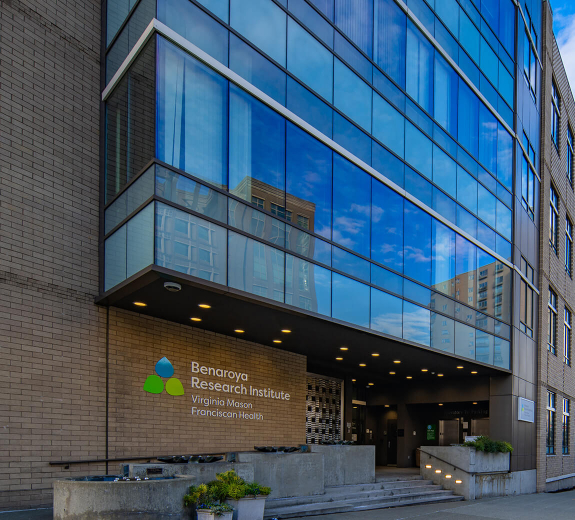In an article published today in Science Immunology, researchers from Benaroya Research Institute (BRI) and the University of Washington found a new pathway that protects our cells against damage to their outer membranes caused by bacterial toxins or our own immune responses. The research team, led by Drs. Adam Lacy-Hulbert, Lynda Stuart and Caroline Stefani, conducted a genetic screen to find genes that would allow a human cell line to survive after exposure to a toxin from the bacteria Staphylococcus aureus, known as “alpha-toxin.” The research team found a gene called LITAF that, when switched on, helps cells repair damage in their surface membranes caused by bacterial toxins. This is the first time this gene and pathway have been shown to be involved in the process of cell membrane repair.
Pore-forming toxins are released by bacteria and are able to punch tiny holes in the surface membranes of our cells. These pores cause leakage of cell contents, impairing cell functions and triggering cell death, allowing the bacteria to enter the body and evade the immune system. Our cells have evolved complex mechanisms to fight these toxins, including ways to quickly repair and replace damaged membranes. However, how these repair mechanisms are activated in response to damage, and why some cells or individuals are better at repair and resisting toxin damage than others has remained poorly understood until now.
The BRI team found that when cells sense the leakage of certain components through pores, they use LITAF to turn on a very effective repair mechanism, which quickly “packages” the damaged membranes and expels it before the cell is forced to die. Notably, the immune system also uses pore-forming proteins to kill our own cells when they are infected or causing cancer, and this same LITAF pathway protects against this immune killing as well.
"Cellular stress and damage are direct effects of the immune response and can lead to the loss of essential cells, like pancreatic beta cells in type 1 diabetes or neurons in neurodegenerative diseases like multiple sclerosis,” noted Dr. Stefani. “Finding this gene that can boost repair and limit cell death could lead to new therapeutic approaches to protect our healthy cells and limit immune disease progression. It could also have implications in increasing the killing of harmful cells by the immune system, like in the case of infected cells or cancer cells.”
“What is exciting to us is that this LITAF-mediated pathway is different from other pathways of membrane repair that have been described recently,” added Dr. Lacy-Hulbert. “It is activated by different signals and occurs at a different place in the cell. We think that the body may be able to activate this pathway during infection or stress to increase its defenses.”
The BRI team plans to extend their studies of LITAF and other genes identified in their screen to better understand how cells respond to damage caused by infection and immune attack and find ways to harness these responses to combat inflammation and autoimmunity.



